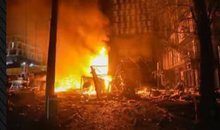
 Flash News
Flash News
The case of the murder of the Italian teacher is reopened, a 47-year-old Albanian suspect is suspected
Boat captain drowns after diving into water to save two tourists in Shkodra
After Fier, Rama "landes" in Durrës, dismissals expected
Ervin Salianji arrives at the blue headquarters, welcomed by supporters
Rama does not spare even the directors of the Fier municipality, demands their dismissal
In the Serbian village claimed to be the birthplace of vampires: Mysterious deaths were once reported
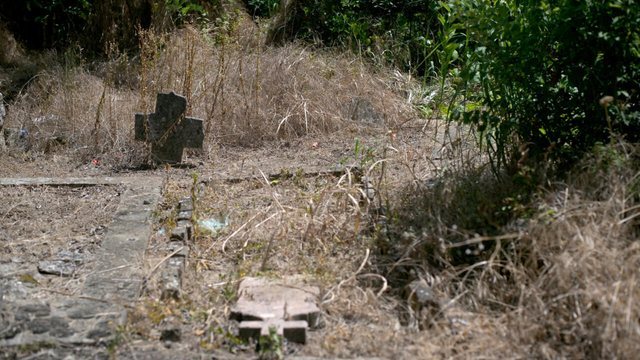
Walking through dense bushes, local historian Nenad Mihajlovic removes branches to uncover the grave. According to locals, it is the long-lost burial site of Petar Blagojevic, known as the father of vampires.
Based also on historical documents, Mihajlovic and the villagers hope that Kisiljevo, about 100 kilometers east of Belgrade, will gain fame as the birthplace of vampires and attract tourists from all over the world.
In the summer of 1725, long before Irish writer Bram Stoker designated Transylvania as the famous home of Dracula, the residents of this village opened Blagojevic's grave, suspecting that he rose at night to kill the locals.
“Petar Blagojevic was found completely unharmed,” recalls Mirko Bogicevic, a former village head and member of a family that has lived there for 11 generations. “Fresh blood was flowing from his mouth and ears,” Bogicevic says.
"He was probably just an ordinary man who had the good fortune or misfortune to become a vampire. All we know is that he came from Kisiljevo and his name is mentioned in documents from the 1700s," he adds, showing a copy of the Austrian newspaper "Wienerisches Diarium" dated July 21, 1725.
This event marks the beginning of the legend of the vampire of Kisiljevo.
According to Austrian experts who were sent to the border area to investigate the mysterious deaths, a linguistic misunderstanding may have given rise to the myth. Clemens Ruthner, head of the Centre for European Studies at Trinity College Dublin, explains:
“In Bulgarian there is an old word 'Upior', which means 'bad person'. I believe the locals mentioned it vaguely and the doctors mistranslated it as 'vampire'.”
The Austrians, seeing the blood coming out of the body, thought it was indeed something unusual, but the deaths were caused by high temperatures associated with serious infections.
"Vampirism, like witchcraft, is an anthropological way of explaining incomprehensible things," adds Ruthner.
Three centuries later, few people have visited Kisiljevo, a quiet village with beautiful nature.
In the Serbian village that claims to be the birthplace of
The Resurrection of the Legend
Beyond the invisible creatures, promoting local folklore has great potential to attract tourists and investors, says Dajana Stojanovic, director of the tourism office.
“Our region is rich in myths and legends, not only the story of Petar Blagojević, but also the magic of the Vlachs and unique local customs,” she says. “Every village has its own traditions,” she adds.
But for Mihajlovic, more than legend, it's about the true history of this area.
"We have complete documentation of a very special event, a case officially known as vampirism," says the 68-year-old professor.
“I personally believe in the veracity of that report.” And he’s not the only one…
In some houses in the village, bottles of Serbian brandy mixed with garlic and chili pepper are still kept, a reminder of ancient beliefs. /France 24
Latest news


EU targets health, education, police and cadastre as areas of corruption
2025-07-08 19:23:34

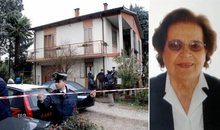


Salianji after his return: I did not oppose for functions, but for vocation
2025-07-08 18:23:15
Will he run in the 2029 elections? Here's how Salianji answers
2025-07-08 18:16:09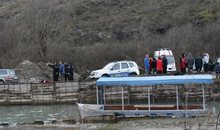
Boat captain drowns after diving into water to save two tourists in Shkodra
2025-07-08 18:05:12
Salianji from the DP headquarters: I brought a drug trafficker to justice
2025-07-08 18:03:26
After Fier, Rama "landes" in Durrës, dismissals expected
2025-07-08 17:53:32
Ervin Salianji arrives at the blue headquarters, welcomed by supporters
2025-07-08 17:45:12
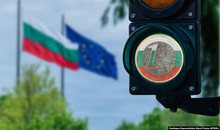
EU approves final steps for Bulgaria's Eurozone membership
2025-07-08 17:43:06

Zhupa after Salianj's release: Inspiration for every opposition member
2025-07-08 17:19:39
Actor David Killick passes away
2025-07-08 17:09:23



Threatened with dismissals, Rama arrives at the Fier municipality
2025-07-08 16:39:19
Extreme temperatures temporarily close Acropolis in Greece
2025-07-08 16:30:34

A plot of cannabis is discovered in Mazha, Kruja
2025-07-08 16:13:48

Republika Srpska allocates additional 22 million euros for lobbying in the US
2025-07-08 15:52:04

Spices that protect you from mosquitoes!
2025-07-08 15:30:03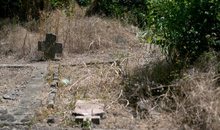

Accident on the Vlora-Qeparo axis, one injured
2025-07-08 15:11:52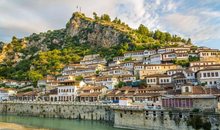
Berat, 17 years part of UNESCO's world heritage
2025-07-08 15:03:30
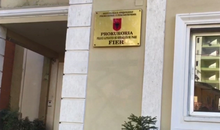

Cost of living increases, inflation rises to 2.4% in June, driven by food
2025-07-08 14:29:54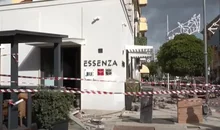
VIDEO/ Restaurant roof collapses in Italy, one victim and ten injured
2025-07-08 14:18:44
Requested release from cell, Supreme Court leaves Veliaj in prison
2025-07-08 14:07:41
TikTok shutdown/ Austrian media: Rama benefited politically from the app ban
2025-07-08 13:48:25
Acropolis temporarily closed due to heat
2025-07-08 13:31:09



Salianj's release/Berisha: He was politically condemned by Rama and Xhafa!
2025-07-08 13:00:13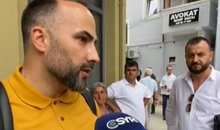
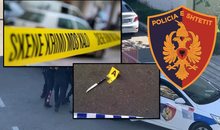
Knife attack on Peshkopia Boulevard
2025-07-08 12:44:10
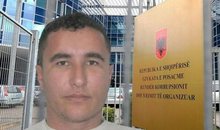

Fier Court decides on the conditional release of Ervin Salianj
2025-07-08 12:15:23
Cost of living increases, inflation rises to 2.4% in June due to food
2025-07-08 12:00:16

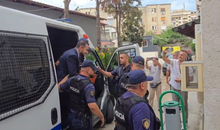
Requesting conditional release, Ervin Salianji arrives at the Fier Court
2025-07-08 11:16:36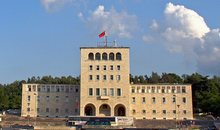
The first phase of university applications begins today
2025-07-08 11:10:52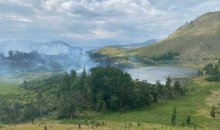
Fire in Lura, flames endanger the National Park
2025-07-08 10:53:43
Trump warns of 35% tariffs on Serbia and 30% on Bosnia and Herzegovina
2025-07-08 10:37:32
Thethi rooster and the dung cock
2025-07-08 10:24:01
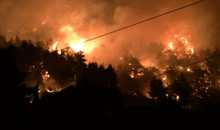
Fire in Dukat endangers Llogara National Park
2025-07-08 10:01:39
International drug search: 36-year-old arrested in Durrës (NAME)
2025-07-08 09:50:48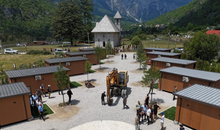
Thethi, tourists "criticize" modern trend
2025-07-08 09:39:54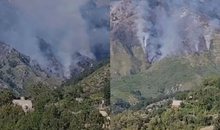
Fire on Mount Dukat still active, Llogara National Park at risk
2025-07-08 09:28:12
Veliaj's appeal to be heard today in the High Court
2025-07-08 09:16:02
"Bad sign for democracy"/ Parliament neglects reporting by institutions
2025-07-08 09:04:56
Today's hearing at the Fier Court, Salianji requests conditional release
2025-07-08 08:56:39
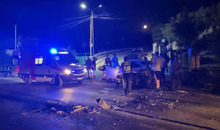
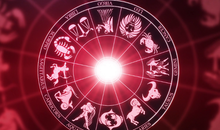
Horoscope, what do the stars have in store for you today?
2025-07-08 08:16:19
Weather forecast/ How temperatures will vary throughout the day
2025-07-08 08:02:37
Morning Post/ In 2 lines: What mattered yesterday in Albania
2025-07-08 07:48:30





Marrëdhënia që s’është romancë, por s’është as thjesht kolegiale
2025-07-07 21:39:13
Citizen is asked to pay 2.5 million for a non-existent meter
2025-07-07 21:28:03

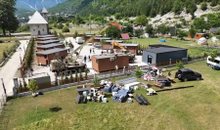


What is the ideal air conditioner temperature in summer?
2025-07-07 20:53:46
GJKKO left him in prison, Meta appeals the decision
2025-07-07 20:38:05
Where is Ronaldo after missing Diogo Jota's funeral?
2025-07-07 20:38:04

Messages from the author who killed Ilaria Sulla in Rome are revealed
2025-07-07 20:20:12
At least 91 dead in Texas floods
2025-07-07 20:12:02
Elbasan, choked by smoke, scorched by conscience
2025-07-07 19:48:16

Swarm of bees attacks citizens in France, 24 people end up in hospital
2025-07-07 19:32:03
Dementia/Hearing loss may be a warning sign
2025-07-07 19:13:06
The decision for Malltez, Gjokutaj: Boomerang for SPAK and the Court
2025-07-07 19:01:08

Former Supreme Court member acquitted of asset concealment
2025-07-07 18:36:40

WIIW expert in Politiko: Brain drain is steadily weakening the Albanian economy
2025-07-07 18:11:41
Heart health is at risk from extreme heat, here's what you should be careful of
2025-07-07 18:10:18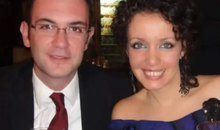
Today Gert Bogdani would celebrate, Edlira Çepani's touching dedication
2025-07-07 17:40:45

